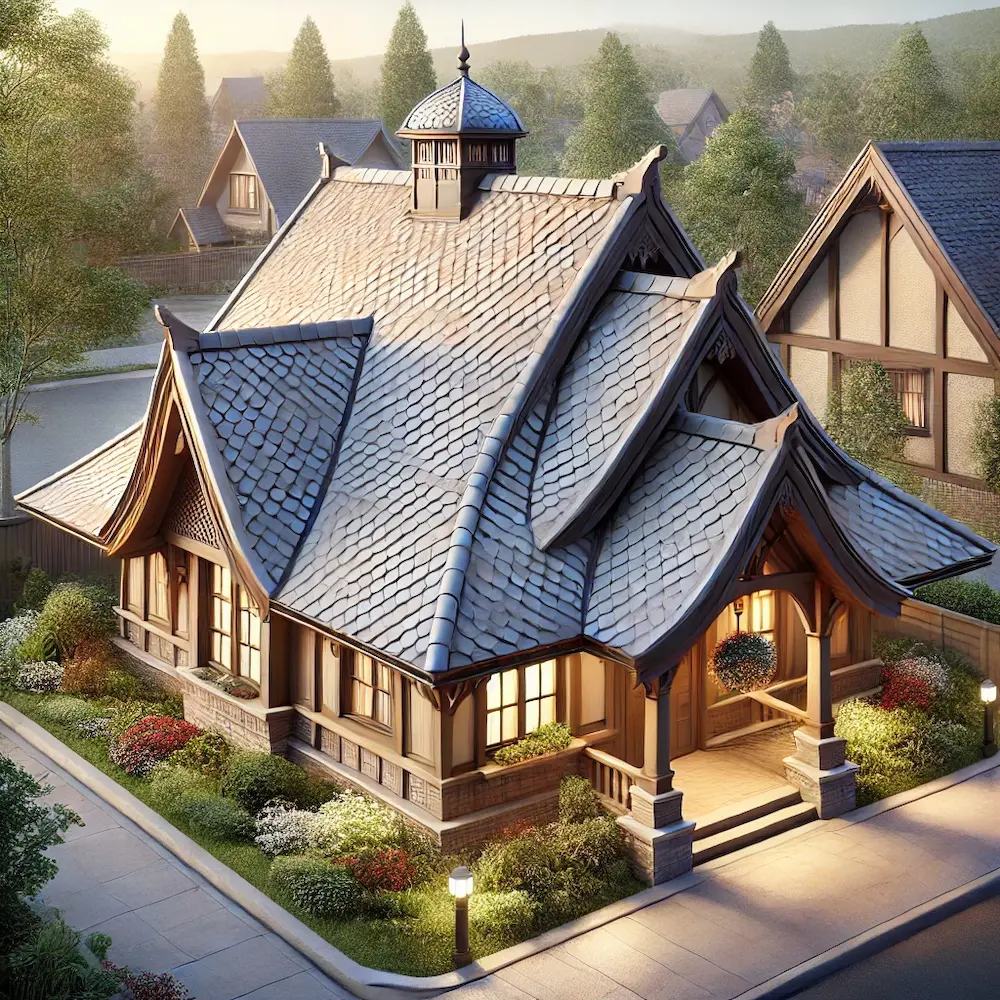A bonnet roof, also known as a kicked-eave roof, features a double slope on all four sides, with the lower slope having a gentler pitch than the upper. This design often extends beyond the building’s walls, providing natural shade and protection, particularly over porches or verandas.
History and Origins of Bonnet Roofs
The bonnet roof design has been around since the early 1700s. The Germans and Polish built their greenhouses with bonnet-style tops to protect plants from severe weather and direct the sun’s rays where they needed them. In the 1700s, the bonnet roof was also famous in the United States, particularly in the Mississippi River area, due to Creole architecture influences.
Key Features of Bonnet Roofs
- Dual Pitch: The upper slope is steeper, while the lower slope has a more gradual incline, often extending over outdoor spaces to provide shade.
- Overhanging Eaves: The extended lower slope offers protection from the elements, shielding walls and windows from rain and sun exposure.
- Versatility in Materials: Bonnet roofs can be constructed using various materials, including shingles, metal panels, or clay tiles, allowing for customization to suit different architectural styles.
Applications of Bonnet Roofs
- Residential Architecture: Common in French Colonial and Creole-style homes, especially in regions like Louisiana, where the design complements the local climate and aesthetic preferences.
- Greenhouses: Historically used in German and Polish greenhouses to protect plants from severe weather and direct sunlight.
- Porches and Verandas: The extended eaves provide natural shade and shelter, making bonnet roofs ideal for covering outdoor living spaces.
Considerations When Choosing a Bonnet Roof
Advantages
- Shade and Protection: The overhanging eaves offer excellent shade for porches and protect the building’s siding from UV rays and water damage.
- Aesthetic Appeal: Bonnet roofs add a unique and elegant look to a building, enhancing its curb appeal.
- High-Wind Resistance: The design is structurally sound and can withstand high winds, making it suitable for hurricane-prone areas.
Disadvantages
- Complex Construction: The intricate design requires precise construction, potentially leading to higher labor costs.
- Potential for Leaks: The multiple seams and angles can increase the risk of leaks if not properly maintained.
- Higher Costs: Due to the complexity and additional materials required, bonnet roofs can be more expensive to build compared to simpler roof designs.
Conclusion
The bonnet roof combines aesthetic elegance with practical benefits, offering shade, protection, and a distinctive architectural style. While it provides several advantages, including high-wind resistance and enhanced curb appeal, considerations regarding construction complexity, potential for leaks, and higher costs are essential. Consulting with an experienced architect or builder can help determine if a bonnet roof aligns with your building requirements and design preferences.
